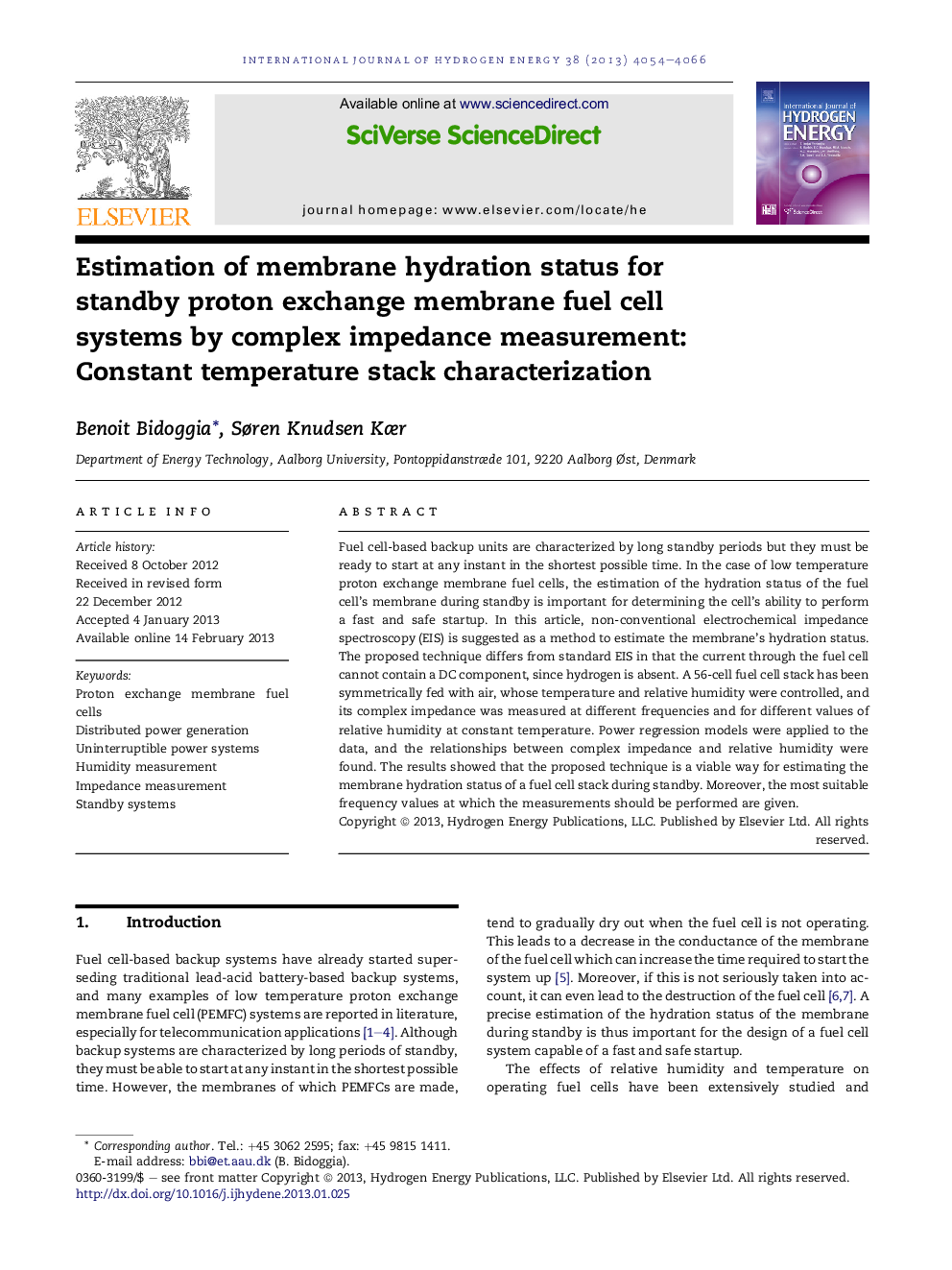| Article ID | Journal | Published Year | Pages | File Type |
|---|---|---|---|---|
| 1281870 | International Journal of Hydrogen Energy | 2013 | 13 Pages |
Fuel cell-based backup units are characterized by long standby periods but they must be ready to start at any instant in the shortest possible time. In the case of low temperature proton exchange membrane fuel cells, the estimation of the hydration status of the fuel cell's membrane during standby is important for determining the cell's ability to perform a fast and safe startup. In this article, non-conventional electrochemical impedance spectroscopy (EIS) is suggested as a method to estimate the membrane's hydration status. The proposed technique differs from standard EIS in that the current through the fuel cell cannot contain a DC component, since hydrogen is absent. A 56-cell fuel cell stack has been symmetrically fed with air, whose temperature and relative humidity were controlled, and its complex impedance was measured at different frequencies and for different values of relative humidity at constant temperature. Power regression models were applied to the data, and the relationships between complex impedance and relative humidity were found. The results showed that the proposed technique is a viable way for estimating the membrane hydration status of a fuel cell stack during standby. Moreover, the most suitable frequency values at which the measurements should be performed are given.
► The paper deals with the estimation of humidity in a fuel cell stack during standby. ► The stack complex impedance is used for estimating its membrane hydration status. ► The impedance was characterized at constant temperature and variable relative humidity. ► Relationships between impedance and relative humidity have been found. ► The suggested technique seem to be a viable way for monitoring relative humidity.
